The outer edges of the folding screen form a silhouette of a house. The labyrinth gets created in the inner zones of this silhouette. It has a single entrance and exit.

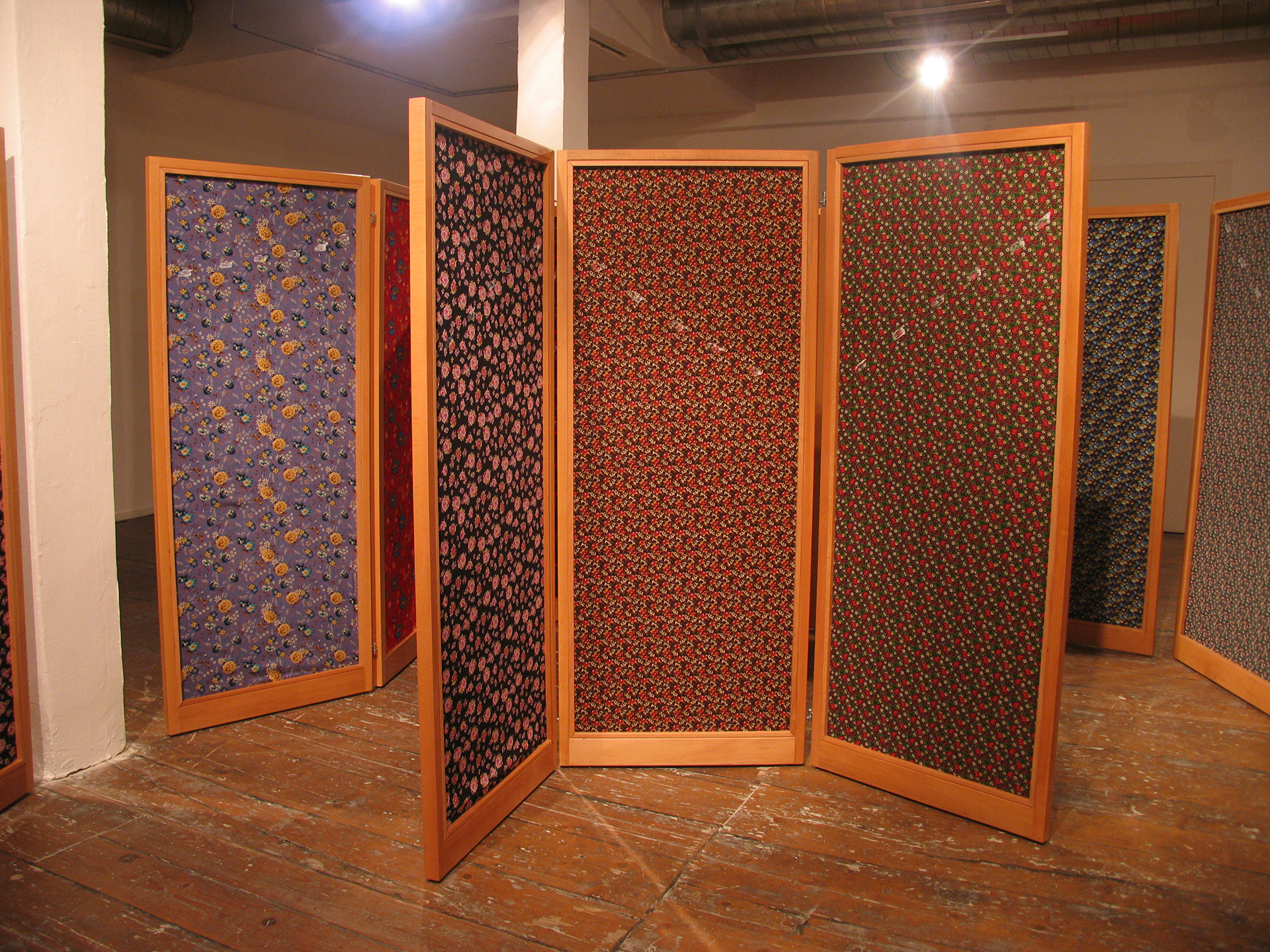
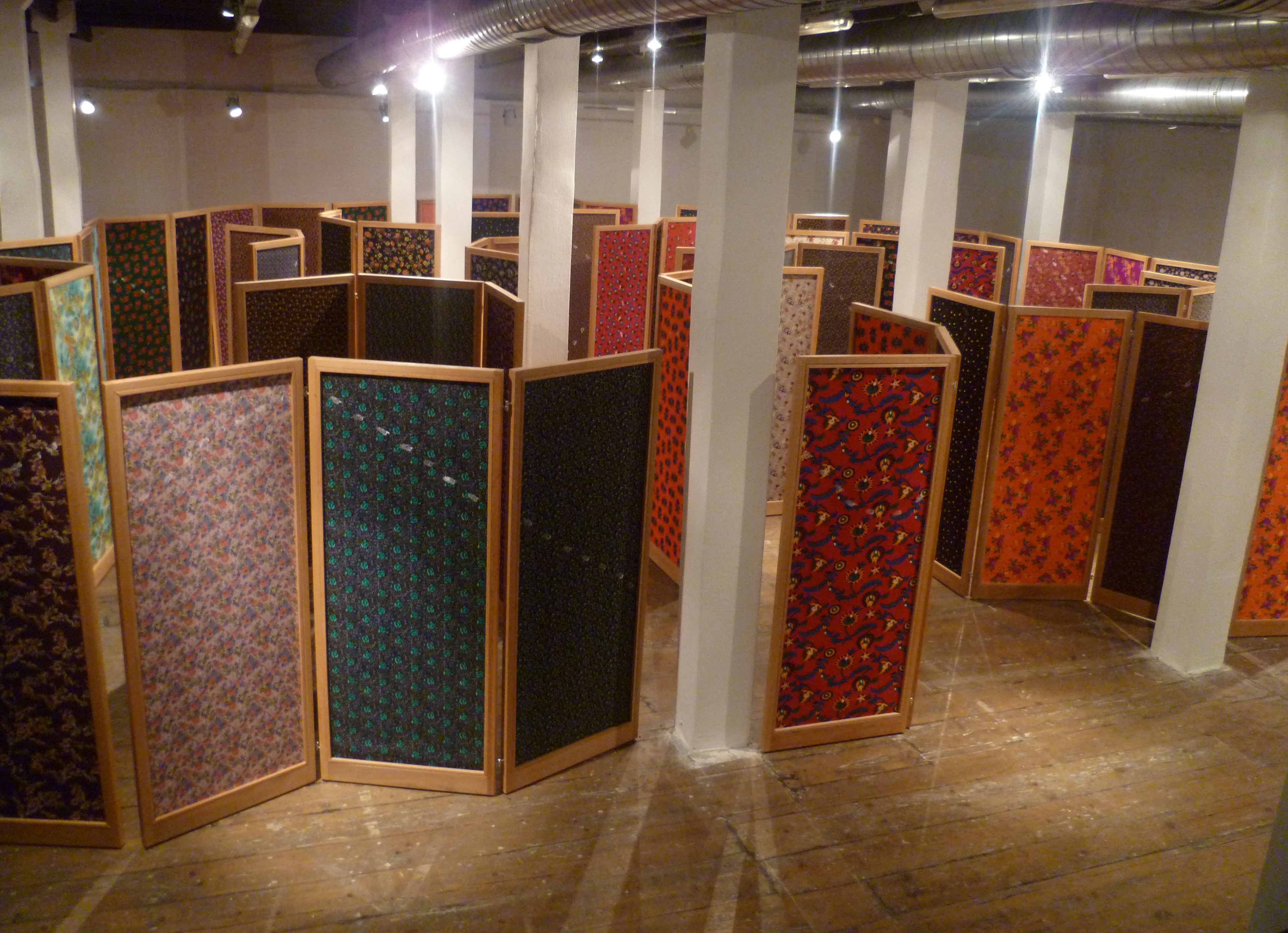
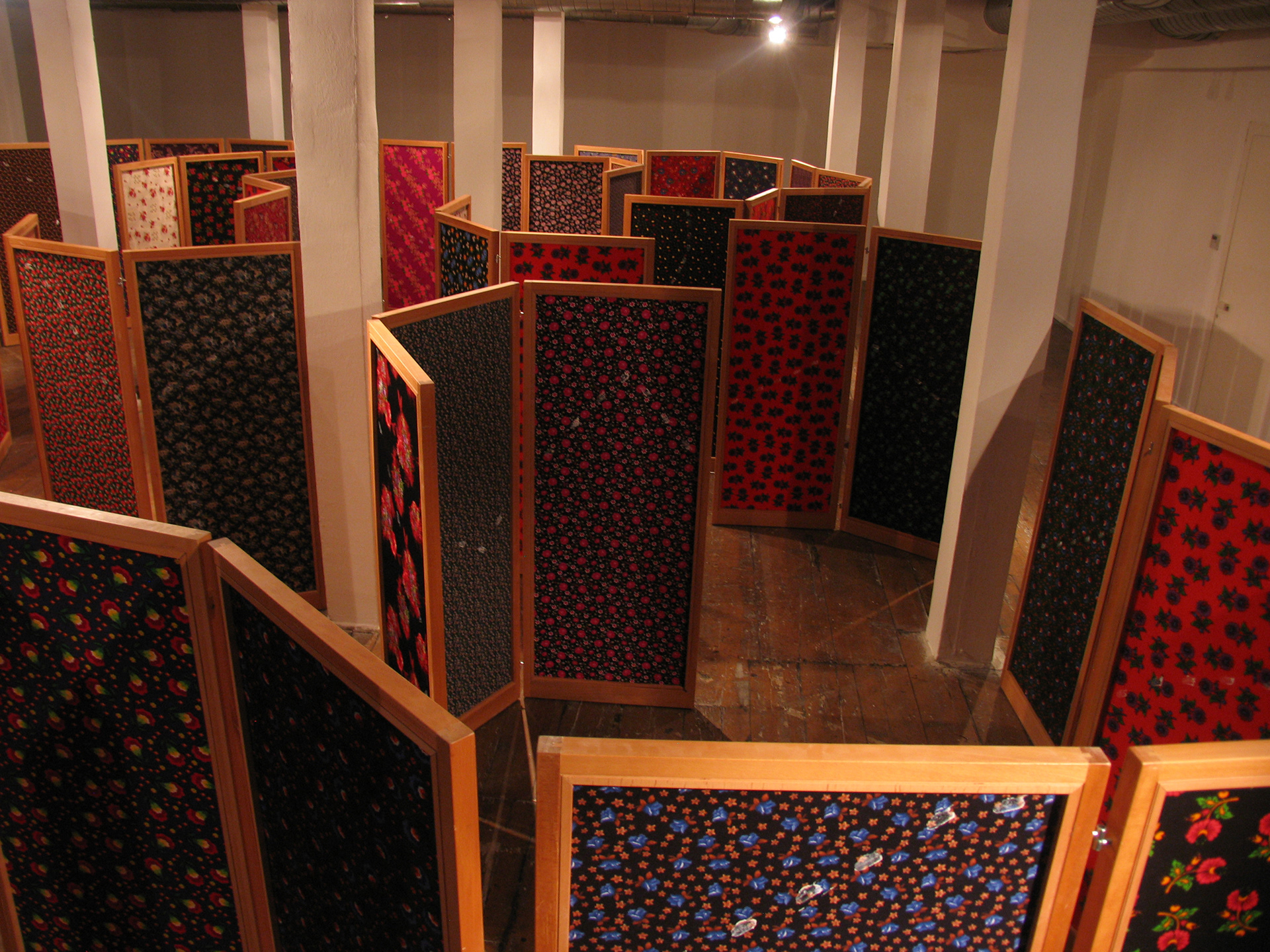
Paravanes, 2013
While I was going through my notebook, I noticed that I made the preliminary sketches for my Paravanes piece in Stuttgart in the winter of 2010. It took me three years to complete and finally exhibit this work.
Well then, what happened during these three years? What kind of effort and research did it take?
As I said, just now, everything starts with a sketch. Then comes reading: what is a folding screen? Where does it come from? What is it for?
What does it mean when you set up a folding screen? This takes a multilevel research process. It is important to look up the etymological meaning of the words, try to understand the origin of the word in various languages.
Research on the history, the function of the language is crucial for a narration. The origin of the word "Paravan" (folding screen in Turkish) is French: "paravent." "Para-", means contra, while "-vent" is the wind. The hirst folding screens were used in che Far East, as a piece of furniture in houses without doors to block the wind. The most frequently used models have three or five panels. They are usually decorated wich ornamental paintings of nature, flowers, plant motif, landscape, legendary tales. I believe folding screens were also used in the West in the 184 century. They may often be seen in the workshops and paintings of Montparnasse painters. Nevertheless, it is a piece of furniture designed to meet a need.
My Paravanes have three panels. These panels are covered with fabrics decorated with printed motifs, mostly fowers, a popular form especially in Anatolia and in the Middle East in general. The patterns and motifs of the printed cloth vary depending on the region and season. Large flowers in radiant colours, pastel colours or smaller motifs... Types of cloth vary: made of cotton, wool, suitable for all seasons or just for winter etc. They all have different names. I collected these fabrics from clothiers in the bazaars and marketplaces of towns and villages that over time I have visited.
I followed a similar research and design process in constructing the labyrinth. I needed fully to understand all the connotations and references of the imagery and their composition I was using. Who used both folding screens and labyrinths in the past? What was his/her intention? What kind of literary, stylistic, ideational narrative was created? Once I have answers to these issues, it is time to pose some technical questions. After I solve the technical problems, I star working almost ar a mechanical pace for the production.! chink the last phase is about the layout of the work. I concentrate on how de are to be placed and what kind of a pattern they will present. As I mentiond before, in relation to my other installations, at this point the physical spas also plays a part. This is the part I call the game/ ritual.
All the panels of the screen were leant on a wall of the exhibition space. My son Asya and I walked towards the centre of the empty space.
[…]
During my research, I noticed that it is impossible to understand de origins of the labyrinth with certainty. In human history we come across the fist traces of labyrinth in the Bronze Age. Maybe we should also go back to pre- or beyond-human eras?
Three years is not a tight schedule for a project. In the meantime, I did a lot of things and sometimes even produced work. There are many things around me, many things that touch my life that I am inspired by. Are my other works less valuable than the Paravanes? No, that's not how I see them. And yet, if there were a virtual scale I feel that Paravanes would weigh more as my main point of focus. Other works are activities to one side, in another area that I call "minor moves", nurturing chis main production.
Embedded, Aley, Lebanon, 2007-2013
Halfeti's Black Rose Garden, Halfeti-Diyarbakir, 2009-2012
Tanpike Field, Vienna, 2008
I made these three films as a trilogy. The first part is the video titled Embedded I edited recently. I shot Embedded in 2007, but edited it six years later in 2013. What took me so long? There are a couple of reasons. Firstly, I needed to cool off from the feelings I had during the filmmaking so as to be able to see the story from a more objective perspective. Secondly, this film was in dialogue with the other works on display in "At Full Cock." Some pieces can wait to one side for years, while some cruder things need to be kept waiting. Like some fruit, they have to be left to ripen, till the moment they are ready to fall from the tree. The second and third parts of the trilogy are Tampike Field - Vienna and Halfetis Black Rose Garden.
There are a couple of reasons why I presented these films as a trilogy. First of all, they have similarities in terms of editing. Nevertheless, each one is shot in a different region, travelling at different times and rhythms; and thus they can also be viewed independently. Their narratives have similarities, too. Although they may be seen as disconnected stories at first, they actually share something and echo one another. To me, what these three videos have in common is a construction of their character's acts that start and end in loneliness. At the same time, they are kind of documentaries of a performance that echo both inside and outside the world we live in. Those who hear will hear; I wouldn't push those who don’t.
Thrown Balls, 1999-2013
Resistance II, 2013
There are certain harbingers of the end of the year and the beginning of another spring. Everyone interprets these indicators in varying ways. As noted in the local weather almanac Maarif, the harbinger of springtime is called the thaw. Meteorologically, there are three types of thaws. Taking place successively, the thaws affect the air, earth and water respectively. In other words, thaw is the term indicating the start of the warming of the weather, earth and finally seas and streams.
I enjoy observing nature with a slacker's eye.
The other day on the way back home, the traffic was jammed up leading to the Bridge. Following one another the vehicles started to stop and move. For a moment, looking up, I caught a dance show in the sky that is always performed at this time of the year. A flock of storks, while we could not drive properly, despite adhering to the traffic rules set for us, was rising into the sky, making well-planned circles without bumping into each other.
They were in a stork/stems/not stuck mood, scattered yet harmonious. How do they do it? A solenoid stair rising up to the sky? Slowly, they moved to my left-hand side and flew away. I don't remember how I learnt this, but as far as I know the storks gather in the Istanbul skies every year before migrating.
In fact, for the majority of migrating birds, Istanbul is one of the largest waystations across the world. Do they get carried off and lifted up by the currents of warm air emitted by the city?
[…]
“When I first displayed my work titled Thrown Balls there were 50 of them. Today, I've lost count. The stock keeps growing. Every now and then, a work gains meaning during the course of time by means of its continuousness or perhaps even through some infinity. Thrown Balls is something of an endless production. Every day, in every season, someone will throw a ball to someone else, someone will throw the ball away, and others will pick it up.”
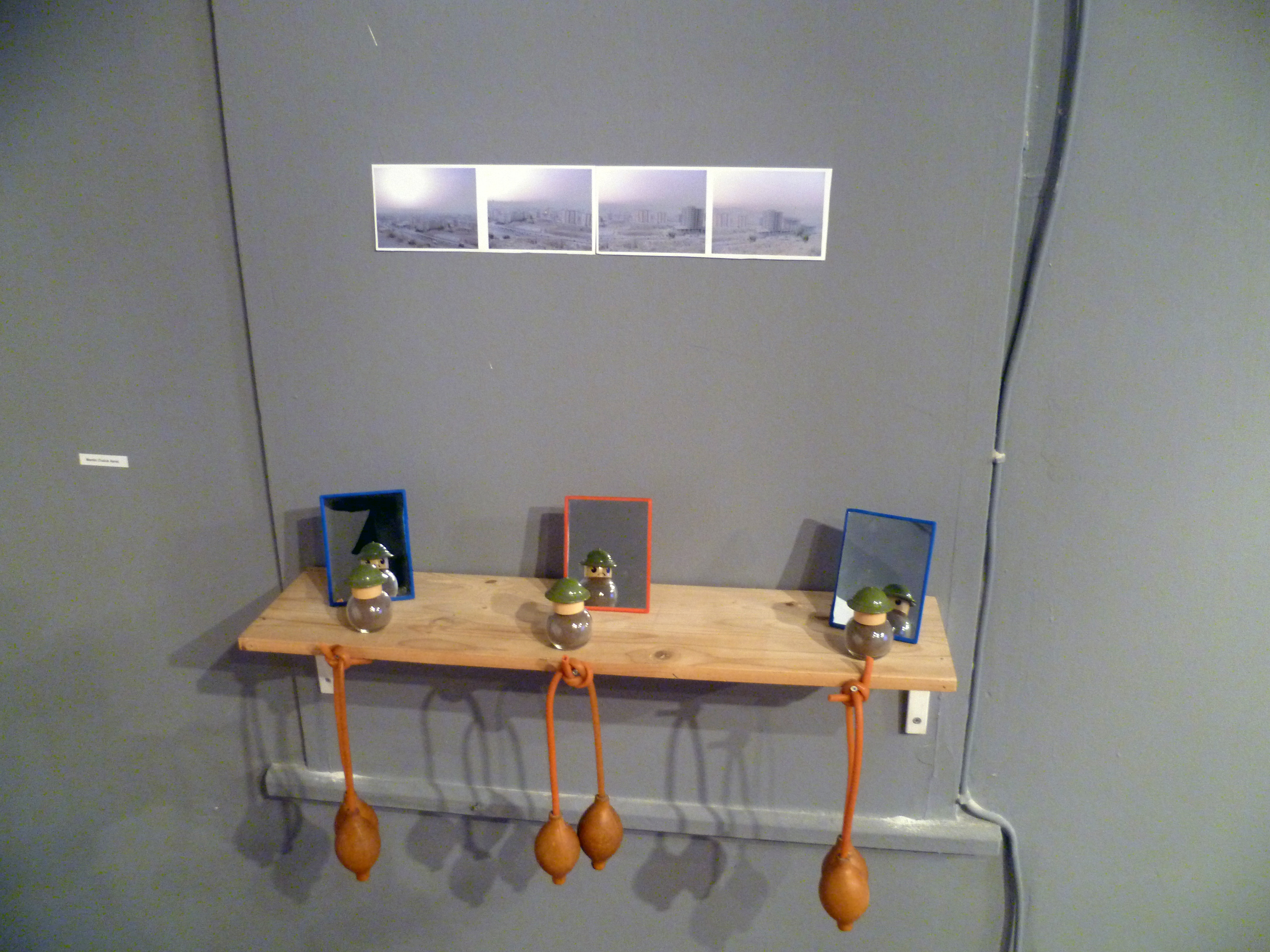
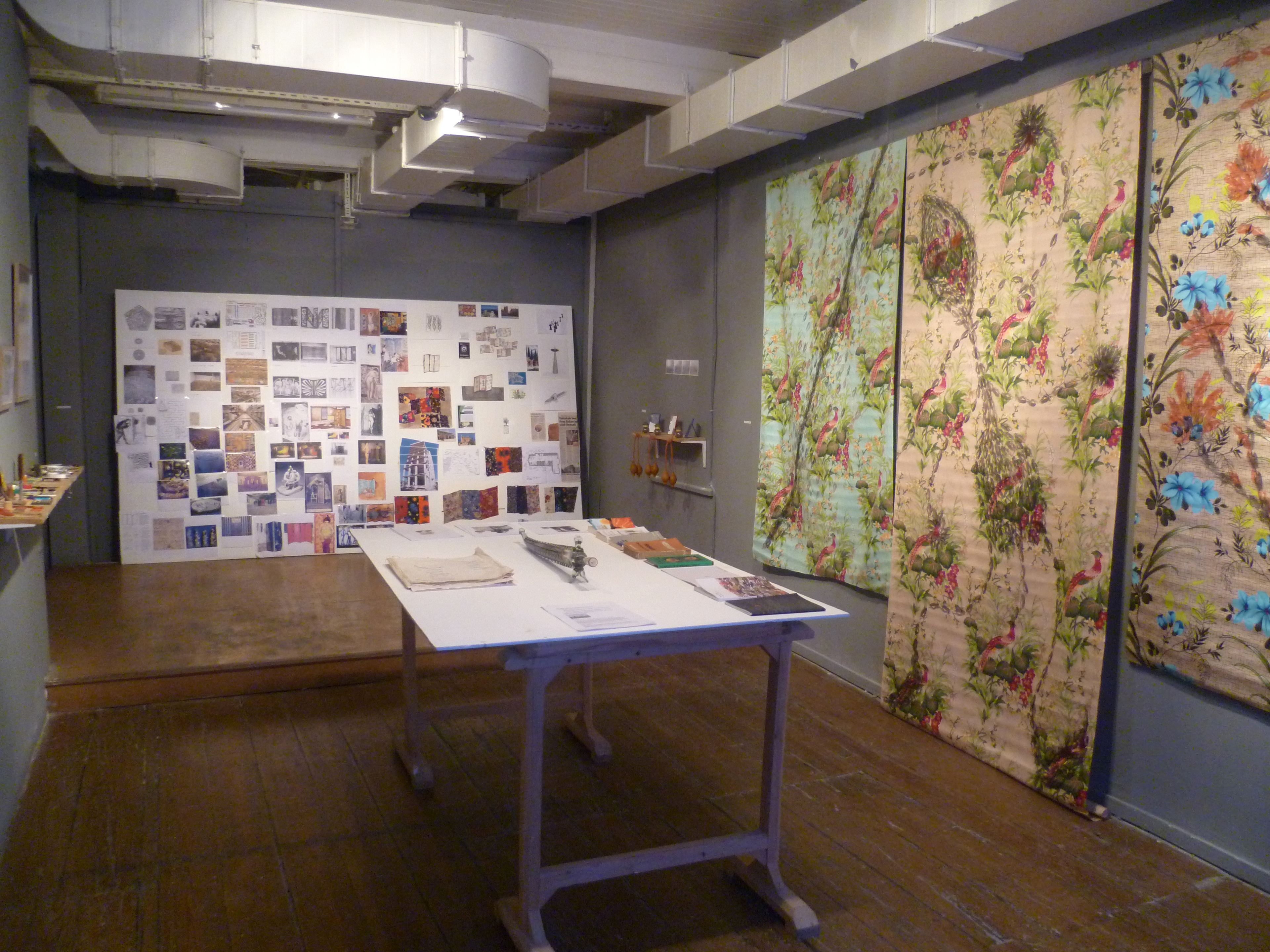
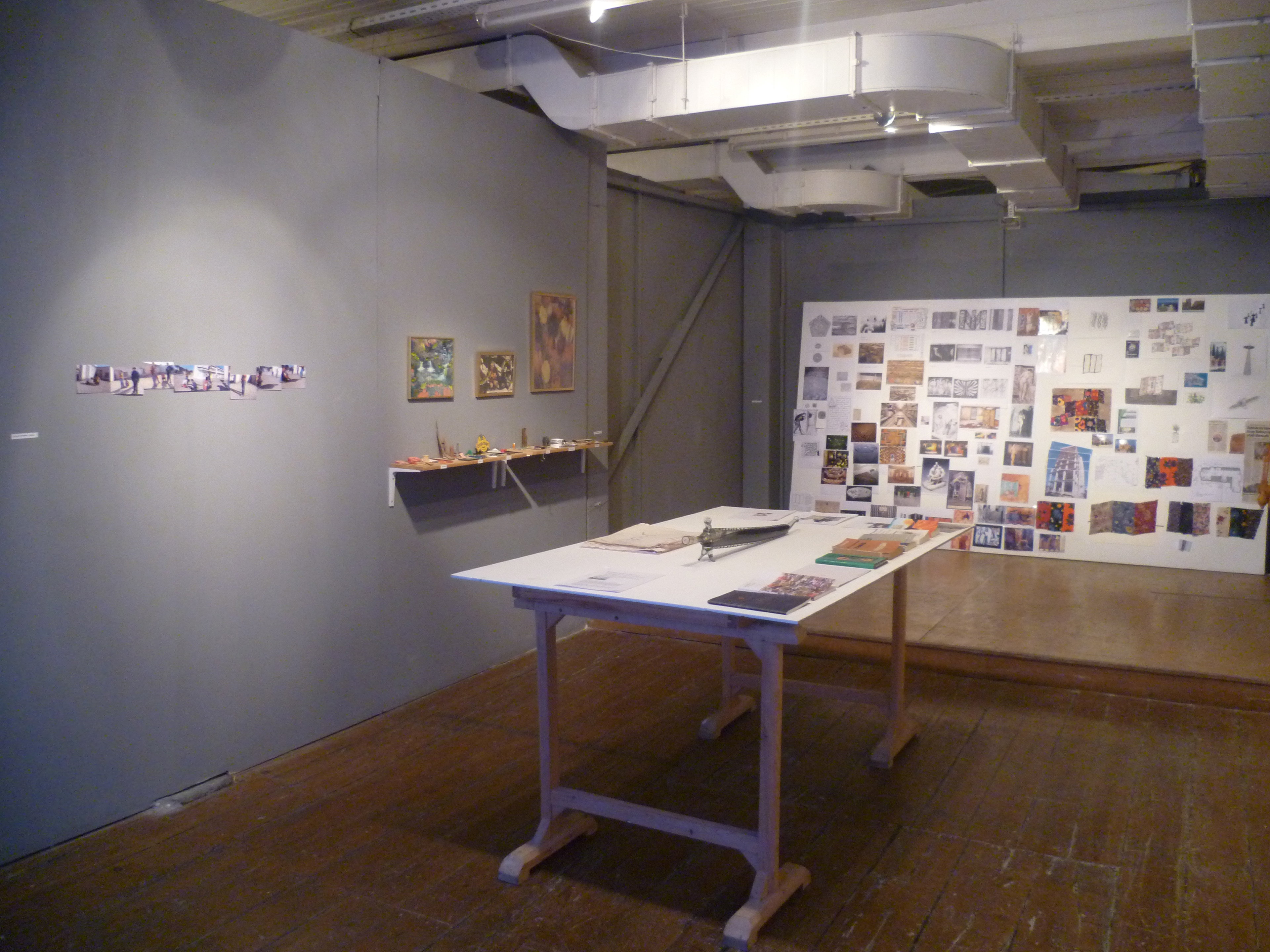
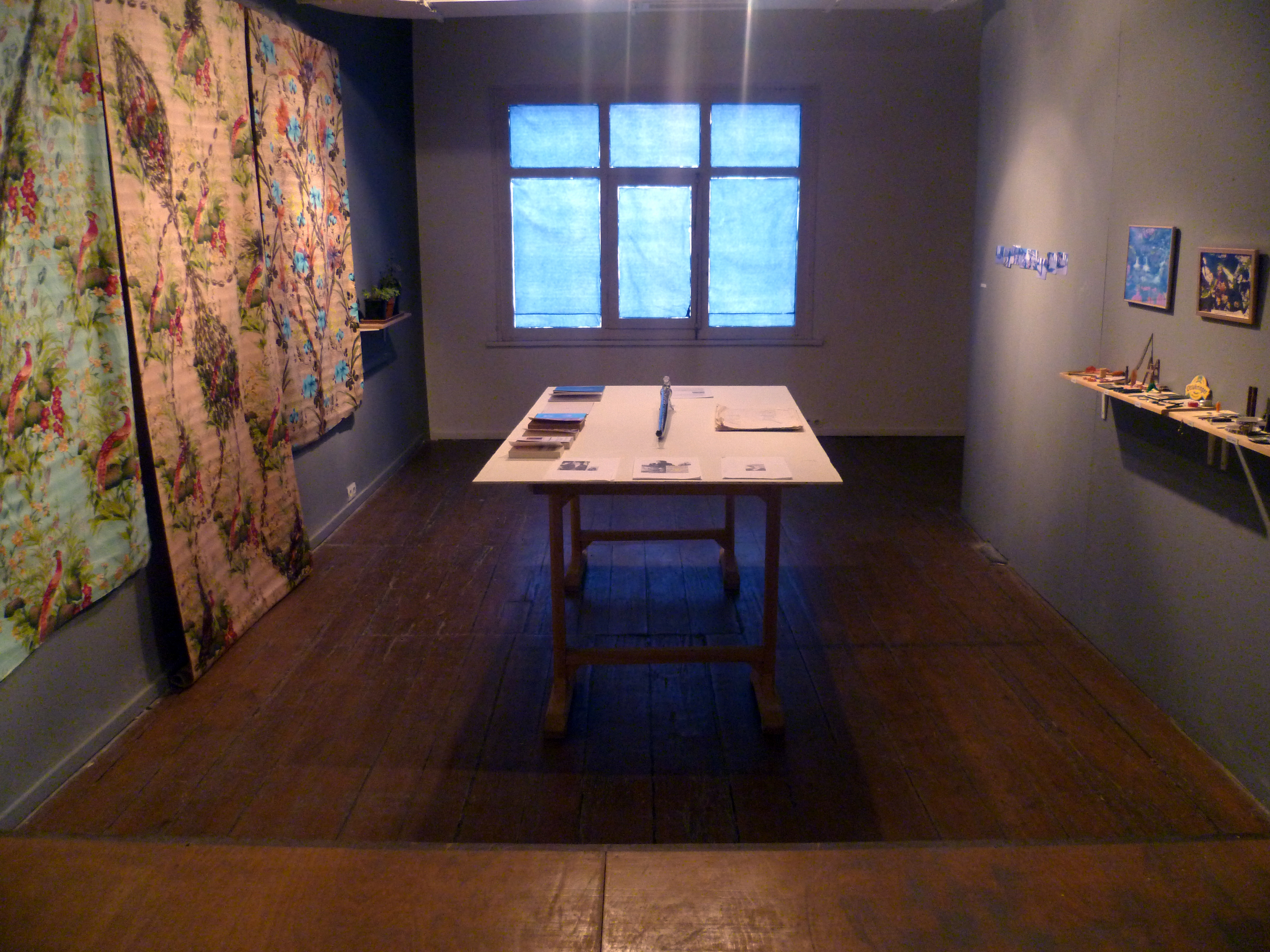
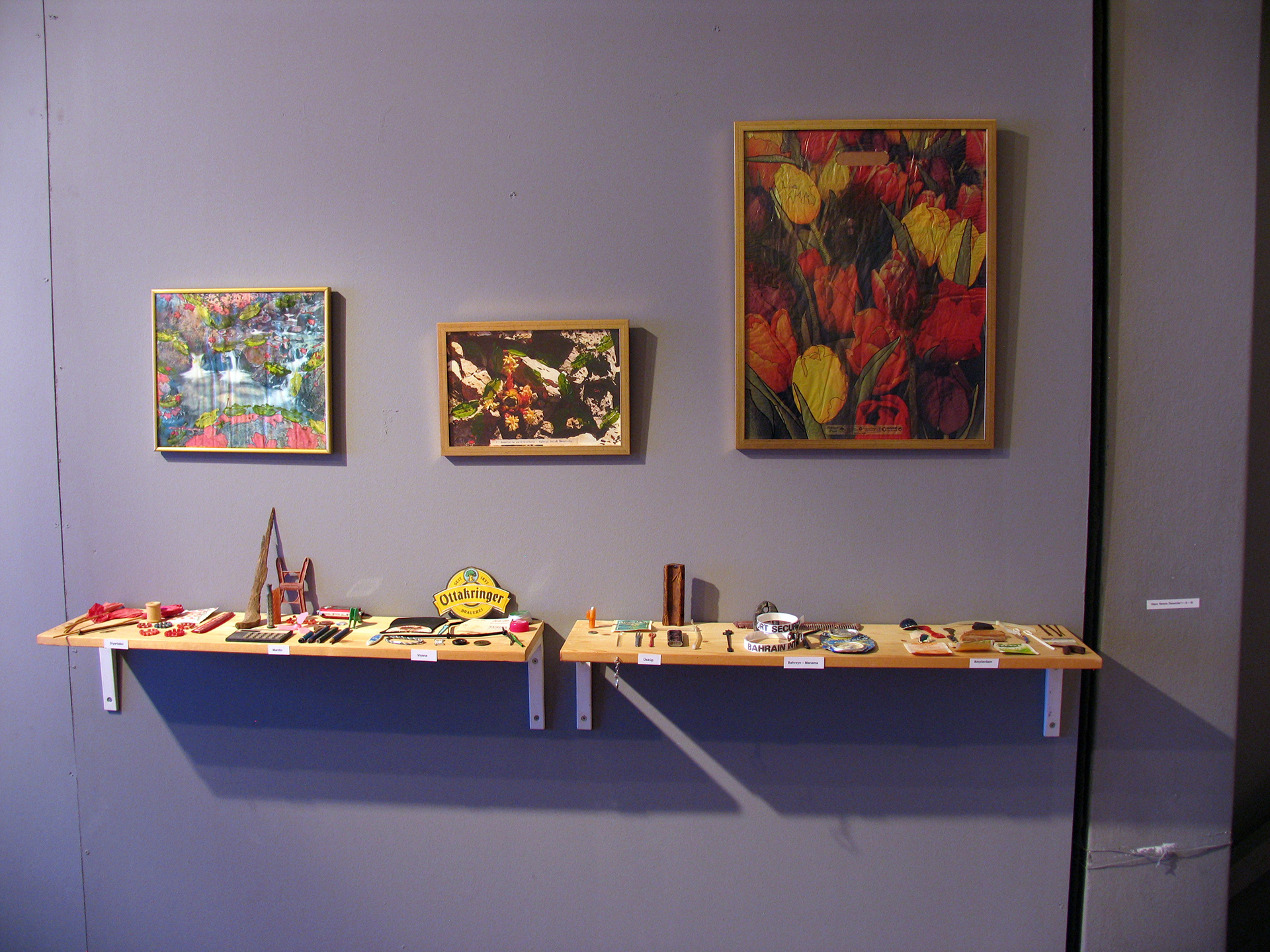
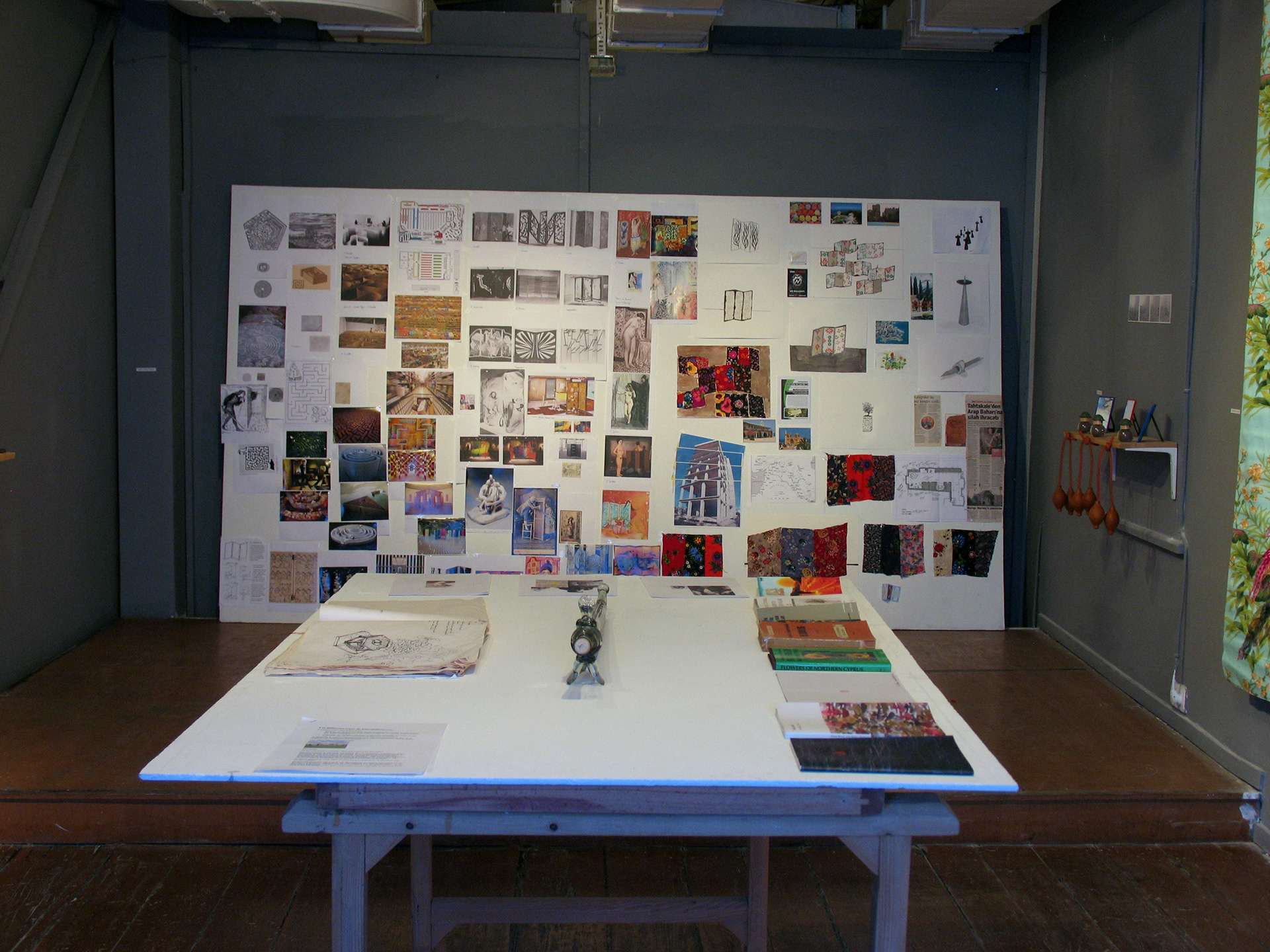
Cabinet du Flâneur Rhizome, 2013
I call my workshop "Cabinet." Why call it "Cabinet" instead of using typica terms like studio or workshop? This is not just a workshop. For me, it is a private space where I can experiment and spend time, consider, think about my writings, illustrations, mostly at my desk and on the sofa. My desk is rather introverted, placed next to a blind wall, whereas the sofa faces the infiniteness of the sky. In here, I keep my books, dictionaries, musics, drawings, papers, notebooks, pencils, ink, paints, brushes, objects I have collected, images, archives. I prepared and matured all the work I have exhibited in the Cabinet. Sometimes, the Cabinet changes. It can turn into a hotel room or an isolated table at a café abroad. It can be a café or restaurant, when I need to take a break from walking around a city like a flâneur. At this point, I think I should talk a little bit about what flâneurie is. It is a very old activity, dating back to the era of the Cynics and Diogenes, perhaps even to the Stoics or Epicurus. In modern times, the best known flâneur is Baudelaire, praised by W. Benjamin as a hero. Certainly, this figure of the fâneur coincides with that time prior to the reconstruction of Paris by Baron Haussmann, the modernization of the 19th century. The flaneur refers to a type who, nurtured by romanticism, gets lost in the crowd. I have tried to adapt the notion of the fâneur to explorers and travellers.
[…]
“It’s a matter of preference that I included someching of my working process and from behind the scenes in the exhibition. Cabinet du Flaneur Rhizome is an installation documenting how I planned these four exhibitions and the book. At the end of the room, there is a panel of a folding screen with images, articles, illustrations and charts, representing different kinds of use of labyrinths, with examples from different eras. At the center of the room there is a table. On the table, there are some reference books I have read, articles, handwritten diaries, a sword, a bottle of red wine. On shelves up against the walls to the left and right, there are objects I put into my pocket during my travels, assemblages of found objects, photos, work in cloth, cactuses. The room takes in the daylight through a window covered with navy blue wrapping paper. Visitors to this room spend more time in this area than in other parts of the venue. Is that because they know this is a private space? Or because they find this room more humanistic? Or just because they find more things to read and examine? They may have different reasons. That's not something I want to meddle with. I prefer leaving them free. Seeing a smile on their face as they leave the exhibition is enough for me.”
Embedded
Aley, 2007-2013
Tanpike Field
Viena, 2008
Halfeti’s The Black Rose Garden
Halfeti-Diyarbakır, 2009-2012